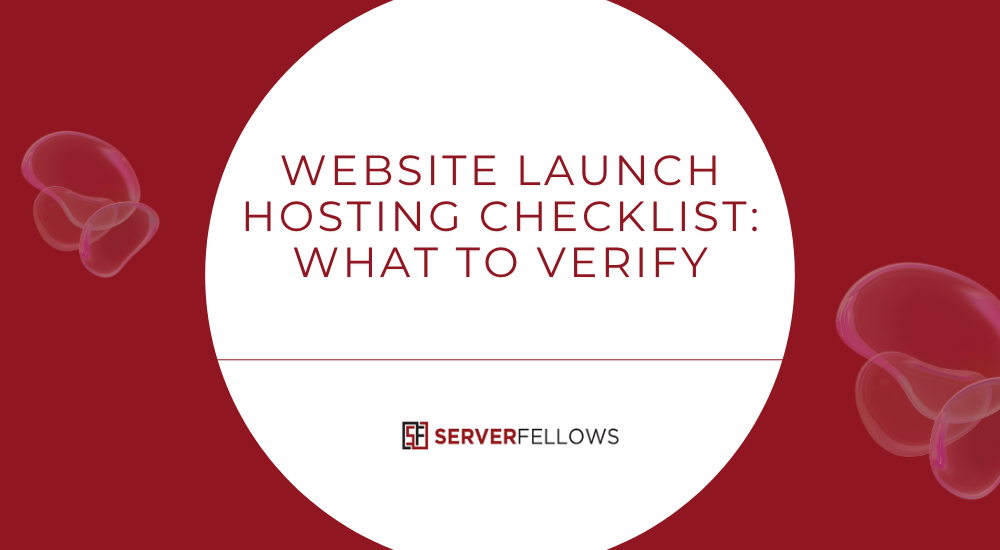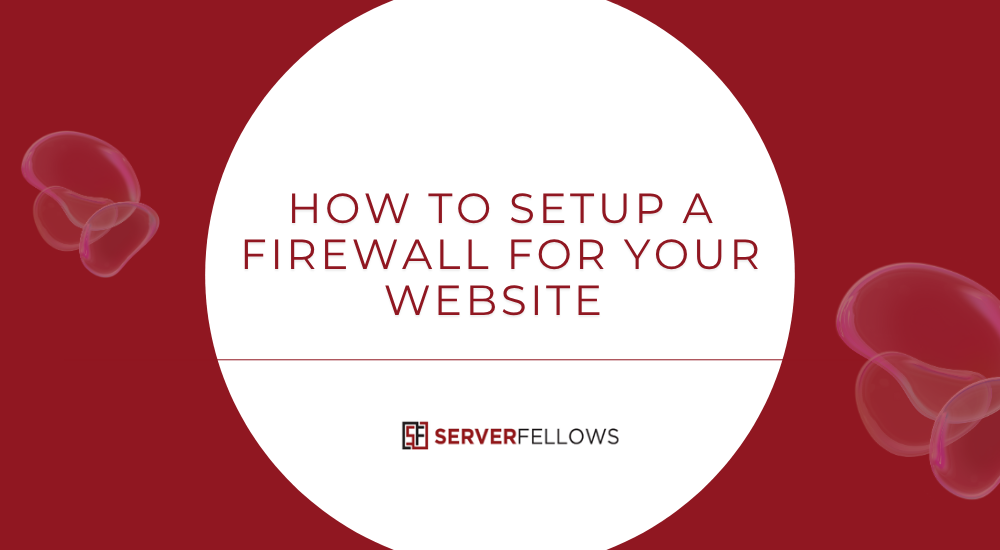
Website Launch Hosting Checklist – What to Verify Before You Go Live
Launching a new website is one of the most exciting milestones for any business or creator. But behind that excitement lies a critical responsibility — ensuring your hosting environment is fully prepared. Overlooking key technical steps before launch can lead to downtime, security vulnerabilities, or lost visitors. This Website Launch Hosting Checklist will guide you through everything you must verify before pressing “go live.” By following these steps, you’ll ensure your website performs optimally, stays secure, and delivers a professional experience from day one.
1. Register and Secure Your Domain
Your domain name is the foundation of your online presence.
- Choose a domain that’s short, easy to spell, and aligned with your brand identity.
- Register your domain with a trusted registrar.
- Enable domain privacy protection to hide your personal information from public WHOIS databases.
- Set up automatic renewals so your domain never expires unexpectedly.
Quick Tip
If your domain and hosting are managed under one account, integration becomes smoother — helping you easily manage DNS records and SSL certificates later.
2. Install and Activate SSL (Secure Socket Layer)
An SSL certificate encrypts the data exchanged between your website and its visitors, building trust and protecting sensitive information.
Why it matters:
- Boosts your credibility with the secure padlock icon.
- Improves SEO rankings, as search engines prioritize secure websites.
- Protects user data such as login credentials and payment details.
Make sure your SSL is installed before launch and redirect all HTTP traffic to HTTPS. If your hosting plan offers free SSL (like Let’s Encrypt), activate it immediately.
3. Set Up Automated Backups
One of the most critical items on your Website Launch Hosting Checklist is ensuring backup systems are in place.
- Enable daily automatic backups through your hosting panel.
- Store copies offsite — either on cloud storage (like Google Drive or Dropbox) or an external server.
- Test your restore process before launch.
Backups aren’t just a precaution — they’re a recovery lifeline if your site ever breaks due to plugin conflicts, hacking, or accidental deletion.
4. Configure Professional Email Hosting
Using a branded email address (e.g., yourname@yourdomain.com) enhances professionalism and builds trust.
Check your hosting plan for integrated email options or connect third-party solutions such as Google Workspace or Zoho Mail.
- Create essential addresses like support@, sales@, or info@.
- Set up email forwarding and spam filters.
- Test sending and receiving emails before launch day.
A solid email hosting setup ensures smooth communication from the start.
5. Optimize Speed and Performance
Website speed is more than just a user-experience factor — it directly impacts conversions and SEO rankings.
Perform a comprehensive speed test using tools like GTmetrix, Pingdom, or Google PageSpeed Insights. Key areas to optimize include:
- Image compression and lazy loading
- Browser caching
- Content Delivery Network (CDN) integration
- Minified CSS, HTML, and JavaScript
- Lightweight plugins and themes
Pro tip: Run multiple tests from different global locations to ensure consistent performance across regions.
6. Strengthen Security Settings
A secure website builds confidence and prevents catastrophic breaches.
Verify these essentials before launch:
- Activate a firewall to block malicious traffic.
- Use malware scanning tools to detect threats.
- Disable file editing via the CMS dashboard.
- Enforce strong password policies and two-factor authentication (2FA).
- Limit login attempts to reduce brute-force attacks.
Many hosting providers include built-in security layers, but it’s wise to add an extra plugin or monitoring service for proactive defense.
7. Enable Uptime and Performance Monitoring
Your website’s uptime reflects its reliability. Even the smallest downtime can cause lost revenue or customer trust.
Use monitoring tools such as UptimeRobot, Better Uptime, or your hosting provider’s built-in tracker. Set alerts to notify you via email or SMS whenever downtime occurs.
Track:
- Uptime percentage (aim for 99.9% or higher)
- Response time consistency
- Server performance under load
Regular monitoring ensures you can fix issues before visitors notice.
8. Test Website Functionality Thoroughly
Before launch, walk through your website as a real visitor would:
- Test all forms, buttons, and CTAs.
- Verify navigation menus and internal links.
- Check mobile responsiveness across multiple devices.
- Review image display, alt text, and alignment.
- Test checkout and payment flows (if it’s an e-commerce site).
This step ensures that nothing breaks under live conditions and visitors enjoy a seamless experience.
9. Review DNS Configuration and Propagation
DNS (Domain Name System) translates your domain name into your website’s IP address. Before launch:
- Ensure A and CNAME records point to your hosting server.
- Remove old or unused DNS entries.
- Set up MX records correctly if you’re using custom email hosting.
- Use propagation tools to confirm global DNS updates.
Proper DNS configuration ensures your website loads correctly from anywhere in the world without delays.
10. Verify Hosting Resources and Scalability
Your hosting environment should be capable of handling traffic spikes without slowing down.
Review:
- CPU and RAM allocation
- Bandwidth limits
- Disk space availability
- PHP version and database optimization
If you expect growing traffic, consider scalable hosting options like cloud or VPS hosting. They allow seamless upgrades as your website expands.
11. Set Up Analytics and Tracking Tools
Launch day isn’t just about being live — it’s about collecting insights.
- Install Google Analytics (or GA4) and verify tracking code placement.
- Add Google Search Console for performance and indexing data.
- Integrate Facebook Pixel, LinkedIn Insights, or other remarketing tags if you run paid ads.
Tracking your audience’s behavior helps you optimize content, design, and performance from day one.
12. Create a Maintenance and Update Plan
Launching your site is just the beginning. A structured maintenance routine ensures long-term health.
- Schedule regular software and plugin updates.
- Check for broken links monthly.
- Review SSL and domain renewal dates.
- Monitor database size and optimize it regularly.
- Maintain a change log for all updates and fixes.
Consistency in upkeep will protect your investment and prevent potential issues from escalating.
13. Review Legal and Compliance Pages
Before going live, make sure your website complies with necessary regulations:
- Add a Privacy Policy and Terms of Service page.
- Include cookie consent banners if applicable.
- Display clear contact information and disclaimers.
Compliance not only builds trust but also protects your brand legally.
14. Final Pre-Launch Checklist
Here’s a condensed Website Launch Hosting Checklist to verify once more before you go live:
✅ Domain registered and active
✅ SSL certificate installed
✅ Backups configured
✅ Email hosting tested
✅ Speed test optimized
✅ Security measures enabled
✅ Uptime monitoring set
✅ DNS records verified
✅ Analytics and tracking tools installed
✅ Legal pages ready
Ticking off every item ensures your website is ready for a flawless launch.
15. FAQs on Website Launch Hosting
Do I really need SSL before launch?
Absolutely. Without SSL, browsers may mark your site as “Not Secure,” which can drive away visitors and lower SEO rankings.
How often should backups run?
Daily backups are ideal for active sites. If you’re managing an e-commerce or content-heavy site, schedule backups multiple times a day.
Is a speed test essential for small websites?
Yes. Even small sites benefit from faster load times — users are more likely to stay and convert when pages load quickly.
What happens if DNS isn’t properly configured?
Incorrect DNS settings can make your website inaccessible. Always verify propagation before launch.
Conclusion
Launching a website successfully isn’t just about design and content — it’s about preparation.
A well-planned Website Launch Hosting Checklist ensures every technical, security, and performance aspect is optimized before you go live.
If you want a hosting partner that simplifies this entire process, consider Serverfellows.com. They provide secure hosting, automated backups, fast load times, and dependable support to make every launch smooth and stress-free.
Prepare. Verify. Launch with confidence — your audience deserves nothing less.


